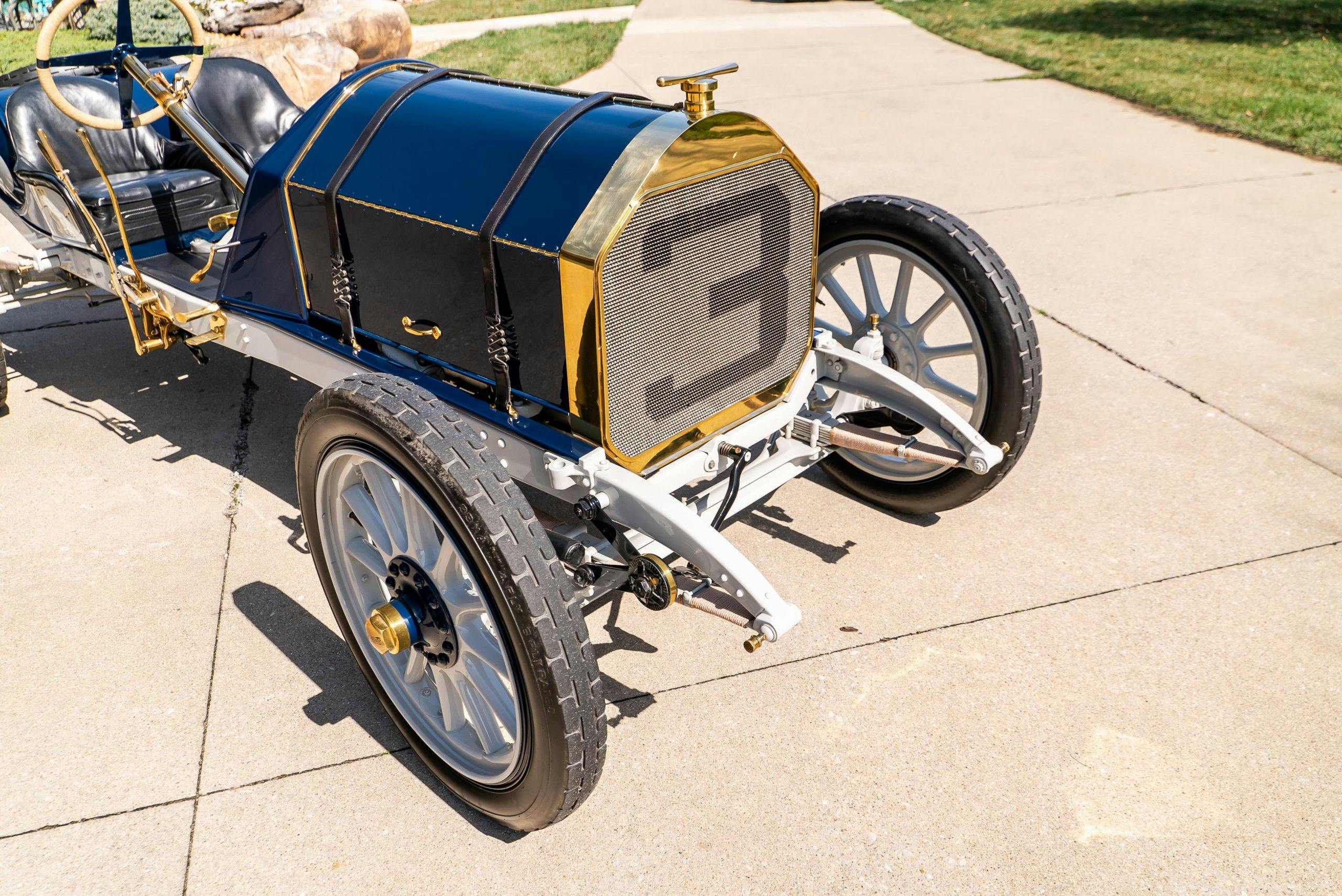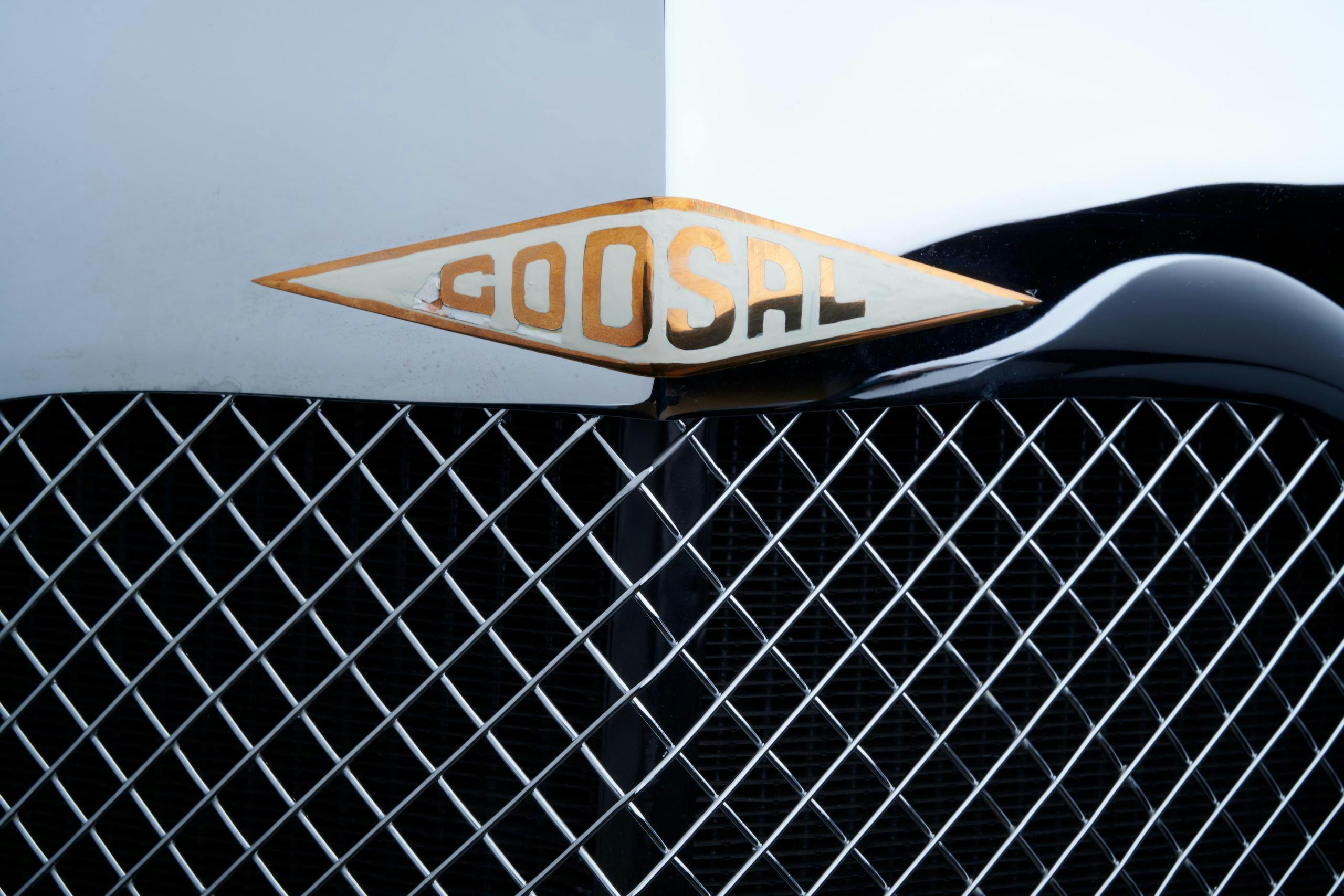Media | Articles
3 cars up for auction at Amelia Island that you didn’t know existed
Next month’s Bonhams’ Amelia Island Auction will bring together many of the usual suspects—Porsche, Jaguar, Cadillac, Volkswagen, MG—as well as a few marques that may be completely unknown to you.
Bonhams, which postponed its Florida event in March and rescheduled it for May 20, recently unveiled the auction’s first group of prewar and vintage cars. Three of them caught our attention because they’re rarely seen on the auction stage—or anywhere else, for that matter.
1953 RGS Atalanta

In Greek mythology, the Goddess Atalanta was renowned for her swiftness of foot, and so is this 1953 RGS Atalanta (Jaguar C-Type) race car. The rare factory works car features an all-aluminum body built by John Griffiths (most Atalantas were fiberglass) and a 3.4-liter, straight-six Jaguar XK series engine (no. F-1632-8). It was highly modified at the time, fitted with special valves and a 16-quart oil sump, plus a racing Warren Pearce intake manifold with triple SU H-8 Sandcast carburetors. Additional features include independent front and rear suspension, inboard rear alloy brakes, 16-inch wire wheels, original Rey-Dot mirrors, and a Le Mans filler cap.
Like most “non-essential” businesses, Great Britain’s Atalanta Motors ceased production at the start of World War II. In 1944, British Major Richard G. Shattock, then working in the Department of Tank Design at Chobham, acquired an Atalanta chassis and parts and began tinkering. Five years later, Shattock bought a garage, along with the rights to Atalanta Motors’ name and inventory, and opened RGS Atalanta in 1951.
This 1953 Atalanta, finished in British Racing Green with a Fly Yellow nose and stripe and wearing a green leather interior, carries registration number UKL 852. In 1955, it was purchased from Shattock’s Brookside Garage by David Smallwood and registered in Kent, England, as a “sports tourer.” It was imported to the U.S. in 1978 by Sam Tayloe, who parted with it in 1988.
Marketplace
Buy and sell classics with confidence
All Atalanta models benefited from lightweight construction and were revered for their solid handling and tenacious cornering ability. The best news for its next owner (who should expect to pay six figures): It can be licensed for driving on the street.
1911 Inter-State Fifty “Bulldog” Indianapolis Recreation

OK, so this isn’t an original, it’s a replica—but you don’t see a lot of Inter-States out there, original or otherwise.
Few cities have ever embraced an automobile company as enthusiastically as Muncie, Indiana, adopted the Inter-State. Introduced by Thomas F. Hart in October 1908, the car was described with the verve and hyperbole common of the age, as “the best automobile made in America, even though everyone doesn’t know it.”

To prove the strength and reliability of their machines, Inter-State execs entered a car in the inaugural Indianapolis 500 in 1911. Of 40 cars on the starting grid, Inter-State’s #3 “Bull Dog” started in the middle of the front row, with Harry Endicott behind the wheel. Endicott finished 16th, hampered by 11 stops for tires. He needed only two stops for oil and gasoline, though, and the Bull Dog’s lone mechanical issue was a carburetor adjustment. Endicott and the Inter-State went on to win twice in Kansas City that year and finished third in two races in Texas.
Muncie’s city fathers made no secret of their hope that the Inter-State would make the eastern Indiana town the next Detroit. It that never happened, however. Inter-State was reorganized in 1913 before eventually folding for good in 1919.
This racer was built in the spirit of Inter-State’s 1911 Indianapolis 500 entrant, and it participated in the IMS 100th anniversary Celebration of Automobiles in 2011. The Brass-era tribute car is powered by 50-hp, 389.9-cubic-inch, T-head, four-cylinder engine sporting a Schebler carburetor and is mated to a three-speed manual transmission. It has solid front and live rear axles with front and rear leaf-spring suspension and drum brakes in the rear.
Bodywork is believed to have been completed by the late Stan Francis of Colorado and includes beautiful leather seats and elegant paintwork in the Indianapolis livery. Upon its completion, the reborn Bull Dog was toured in several events, including in the 2000 California Classic Rally, in which it covered more than 800 miles. The longevity of its restoration was recognized when it received Best in Class here at Amelia Island in 2010.
That year it also toured several concours events during the Indianapolis 500’s centenary year, including appearances at Ault Park and Louisville. Buddy Lazier, winner of the 1996 Indianapolis 500, took the wheel during Indy’s Celebration of Automobiles.
A decade later, it still shows only the slightest signs of age and use and is ready to show or drive. Should you become its new owner, you’d better brush up on your Indy 500 history, because this Inter-State recreation is a guaranteed conversation starter.
1935 Godsal Sports Tourer

The one and only 1935 Godsal Sports Tourer was the creation of a 28-year-old British inventor named Charles Godsal, who commissioned London’s Research Engineers Ltd. to build the sports car’s mechanicals and Corsica Coach Works to create the body.
Godsal was no ordinary tinkerer, and his was no ordinary car. With its low-slung stance and large wheels, the prototype (chassis #001) was an attention-grabber, and it had the performance to back up its good looks. Powered by a contemporary 85-horsepower Ford V-8 engine with single dual-throat carburetor—mated to a preselect gearbox—it rode on a proprietary chassis that featured Lancia-inspired sliding-pillar front suspension and a heavy-duty rear axle sourced from Bentley.

The sports car was exceptional, without a doubt, and so was Godsal’s cost to build it—a staggering £3000, which is the equivalent of about £218,189 today (nearly $300,000). The car was too costly to put into production, so Gosdal sold the prototype to a friend and moved on to other interests (like aviation). The car wasn’t seen for years until it surfaced in the 1969 movie Mosquito Squadron (starring David McCallum), appearing in red and white paint with odd-looking cycle fenders up front and a crude substitute hood with outside exhaust.
The Godsal returned to public view in the March 1977 issue of Thoroughbred & Classic Cars Magazine, fully restored by its new owner, Anthony Sidgwick, who in 1972 answered an ad for a 1954 Ford V-8 Special and discovered a car that was much more advanced than any home-built model. Curious, Sidgwick bought the Godsal and began researching its history. That eventually led to Research Engineers, Ltd., which was still in business at the time. Its managing director not only recognized the car but located production photos. Sidgwick was able to return the Godsal to its original specs, complete with stylish sweeping front wings, a correctly styled bonnet, and Marchal headlamps.
Within months, the Godsal changed hands again. Jerry Old, who was traveling home to California from Saudi Arabia, saw the car in London in June 1977 and just had to have it. After shipping it to the states, Old showed the Godsal only a handful of times before placing it in storage. Upon Old’s retirement in 1993, he moved to Kansas City and stored the car again.
The Godsal remained out of sight until 2016. The following year, it sold for $203,500, also through Bonhams. Now presented in stunning black with brown leather interior, the Godsal is about to become a godsend to some ecstatic collector.



































































